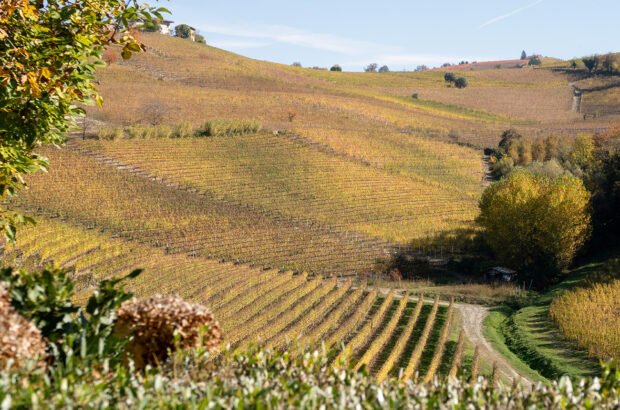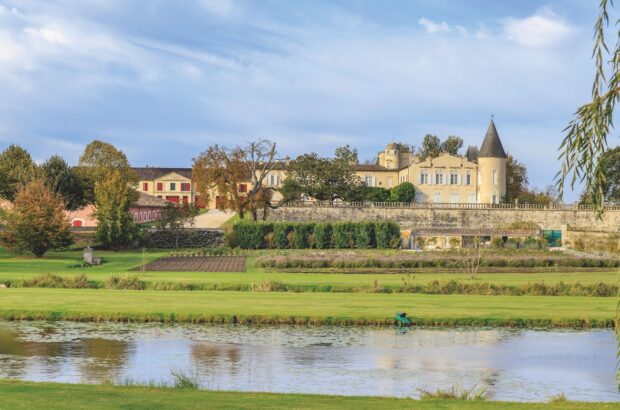Sarah Ahmed, Beatriz Machado and Nick Oakley tasted 76 value Douro red wines with 3 Outstanding and 14 Highly Recommended…
Entry criteria: producers and UK agents were invited to submit latest-release red wines from the Douro Valley, priced £8-£20 in the UK or equivalent in the US
Scroll down to see the tasting notes & scores
The verdict
{"content":"PHA+UG9ydHVnYWzigJlzIGluZGlnZW5vdXMgdmFyaWV0aWVzIG9mZmVyIGEgZmxhdm91ciBleHBlcmllbmNlIGxpa2Ugbm8gb3RoZXIsIGFuZCB0aGlzIGdyZWF0LXZhbHVlIHNlbGVjdGlvbiBpcyB0aGUgaWRlYWwgd2F5IHRvIGRpc2NvdmVyIHdoYXQgbWFrZXMgdGhlIHdpbmVzIHRpY2ssIHNheXMgU2FyYWggQWhtZWQmIzgyMzA7VGhlIG1ham9yaXR5IG9mIHdpbmVzIGZyb20gdGhpcyB0YXN0aW5nIGhhaWxlZCBmcm9tIDIwMTcgYW5kIDIwMTYg4oCTIHllYXJzIHRoYXQgd2VyZSDigJhnZW5lcmFsbHkgZGVjbGFyZWTigJksIHdoaWNoIGlzIHRvIHNheSBvdXRzdGFuZGluZyBmb3IgdmludGFnZSBQb3J0LiBJbiB0aGUgcGFzdCwgdGhpcyBtaWdodCBoYXZlIG1lYW50IHNsaW0gcGlja2luZ3MgZm9yIERvdXJvIHRhYmxlIHdpbmVzLCBlc3BlY2lhbGx5IHRoZSDigJhiYWNrIG9mIHRoZSBxdWV1ZeKAmSB2YWx1ZSByZWRzLiBIb3dldmVyLCB0aGUgRG91cm8gVmFsbGV5IG5vdyBoYXMgbm8gc2hvcnRhZ2Ugb2YgdmluZXlhcmRzIGVhcm1hcmtlZCBvciBwbGFudGVkIGV4cHJlc3NseSBmb3Igd2luZSAoYXMgb3Bwb3NlZCB0byBQb3J0KS48L3A+CjxwPjxkaXYgY2xhc3M9ImFkLWNvbnRhaW5lciBhZC1jb250YWluZXItLW1vYmlsZSI+PGRpdiBpZD0icG9zdC1pbmxpbmUtMSIgY2xhc3M9ImlwYy1hZHZlcnQiPjwvZGl2PjwvZGl2PjwvcD4KPHA+SW4gdGhpcyBzb2xpZCB0YXN0aW5nIGxpbmUtdXAsIDM0IG9mIHRoZSB0b3AgNDYgcmVkcyAoODZwdHMrKSBjYW1lIGZyb20gMjAxNyBvciAyMDE2LCByZWluZm9yY2luZyB0aGUgZnJ1aXQgYW5kIHRhbm5pbiBxdWFsaXR5IG9mIHRoZXNlIHZpbnRhZ2VzLlR5cGljaXR5IHdhcyBpbXByZXNzaXZlLiBBcyBmZWxsb3cganVkZ2UgTmljayBPYWtsZXkgcHV0IGl0OiDigJhHb29kIGFjaWRpdHkgYW5kIHJpY2huZXNzOyBwbHVtbXkgd2l0aG91dCBiZWluZyB0b28gc2xpY2sgYW5kIG9wdWxlbnQg4oCTIHNvLCBkZWZpbml0ZWx5IEV1cm9wZWFuIHJhdGhlciB0aGFuIE5ldyBXb3JsZC7igJk8L3A+CjxwPldpdGggb25seSBvbmUgc2luZ2xlLXZhcmlldGFsIHJlZCwgYmxlbmRzIHNob3djYXNlZCB0aGUgRG91cm\/igJlzIGNsYXNzaWMgbWVsYW5nZSBvZiBwbHVtIGFuZCByZWQsIGJsYWNrIGFuZCBibHVlIGN1cnJhbnRzLCBiZXJyeSBhbmQgY2hlcnJ5IGZydWl0LiBUaGUgdGVsbC10YWxlIHZpb2xldHMsIGRyaWVkIHJvc2UgYW5kIGJlcmdhbW90L0VhcmwgR3JleSBwZXJmdW1lIG9mIDxhIGhyZWY9Imh0dHBzOi8vd3d3LmRlY2FudGVyLmNvbS93aW5lL2dyYXBlLXZhcmlldGllcy90b3VyaWdhLW5hY2lvbmFsLyIgdGFyZ2V0PSJfYmxhbmsiIHJlbD0ibm9vcGVuZXIiPlRvdXJpZ2EgTmFjaW9uYWw8L2E+IGFuZCBUb3VyaWdhIEZyYW5jYSBlbnRpY2VkLiBHdW0gY2lzdHVzIG9yIHJvY2sgcm9zZSDigJMgYSBsb2NhbCBwbGFudCDigJMgZm91bmQgZXhwcmVzc2lvbiBpbiByZXNpbm91cyBvciBtZW50aG9sIG51YW5jZXMuIE91ciB0YXN0aW5nIG5vdGVzIHdlcmUgbGliZXJhbGx5IHNwcmlua2xlZCB3aXRoIHJlZmVyZW5jZXMgdG8gbWluZXJhbGl0eSDigJMgZHVzdHkgc2NoaXN0LCBzYWx0aW5lc3MgYW5kIGdyYXBoaXRlLjwvcD4KPGgzIHN0eWxlPSJ0ZXh0LWFsaWduOiBjZW50ZXIiPjxhIGhyZWY9Imh0dHBzOi8vd3d3LmRlY2FudGVyLmNvbS93aW5lLXJldmlld3Mvc2VhcmNoI2ZpbHRlciU1QnRhc3RpbmdfZGF0ZSU1RCU1QmZyb20lNUQ9MjAxOS0wMS0zMCUyMDAwOjAwOjAwJmFtcDtmaWx0ZXIlNUJ0YXN0aW5nX2RhdGUlNUQlNUJ0byU1RD0yMDE5LTAxLTMxJTIwMDA6MDA6MDAmYW1wO2ZpbHRlciU1QnRhc3RpbmdfZm9ybWF0JTVEPTImYW1wO2ZpbHRlciU1QmNvdW50cnklNUQ9MzUmYW1wO29yZGVyJTVCc2NvcmVfYXZlcmFnZSU1RD1kZXNjJmFtcDtwYWdlPTEiPlF1aWNrIGxpbms6IFNlZSBhbGwgNzYgd2luZXMgaW4gdGhlIHBhbmVsIHRhc3Rpbmc8L2E+PC9oMz4KPHA+VGhpcyB0eXBpY2l0eSBwYXJ0bHkgZGVyaXZlZCBmcm9tIHRoZSBuYXJyb3cgcmFuZ2Ugb2YgZ3JhcGUgdmFyaWV0aWVzIHVzZWQuIFdoZXJlIHNwZWNpZmllZCwgdGhlIHNvLWNhbGxlZCDigJh0b3AgZml2ZeKAmSBncmFwZXMgZG9taW5hdGVkIOKAkyBUb3VyaWdhIE5hY2lvbmFsLCBUb3VyaWdhIEZyYW5jYSwgVGludGEgUm9yaXosIFRpbnRvIEPDo28gYW5kIFRpbnRhIEJhcnJvY2EgKHdoaWNoIHdlcmUgcmVjb21tZW5kZWQgaW4gdGhlIDE5ODBzLCB3aGVuIGEgc3Vic3RhbnRpYWwgdmluZXlhcmQgdXBncmFkZSBjb21tZW5jZWQpLiBUaGUgbW9zdCBwb3B1bGFyIGJvdGggZG9taW5hdGVkIGJsZW5kcyBhbmQgbGVkIHRoZW0g4oCTIDE3IHdpdGggVG91cmlnYSBOYWNpb25hbCwgMTEgd2l0aCBUaW50YSBSb3JpeiAoYWthIDxhIGhyZWY9Imh0dHBzOi8vd3d3LmRlY2FudGVyLmNvbS93aW5lL2dyYXBlLXZhcmlldGllcy90ZW1wcmFuaWxsby10aW50by1maW5vLyIgdGFyZ2V0PSJfYmxhbmsiIHJlbD0ibm9vcGVuZXIiPlRlbXByYW5pbGxvPC9hPikgYW5kIHNldmVuIHdpdGggVG91cmlnYSBGcmFuY2EuIE9ubHkgdGhyZWUgcHJvZHVjZXJzIG1lbnRpb25lZCB1c2luZyBTb3Vzw6NvIChoaWdobHkgdmFsdWVkIGZvciBmcmVzaG5lc3MgYW5kIGNvbG91ciksIHdoaWxlIFRpbnRhIGRhIEJhcmNhLCBUaW50YSBBbWFyZWxhIGFuZCBUaW50YSBGcmFuY2lzY2EgZmVhdHVyZWQgb25jZSBlYWNoIOKAkyB0aG91Z2gsIGFzIEJlYXRyaXogTWFjaGFkbyBwb2ludGVkIG91dCwgd2l0aCBUaW50byBDw6NvIHRoZXNlIGdyYXBlcyDigJhhZGQgdGhlIGRpbWVuc2lvbiBvZiBsaWdodG5lc3MsIHBlcnNvbmFsaXR5IGFuZCBhY2lkaXR5LCB3aGljaCBzb21ldGltZXMgZmFsbHMgc2hvcnQgb24gdGhlIOKAnHByZXR0eeKAnSBbVG91cmlnYS1mb2N1c2VkXSBibGVuZHPigJkuPC9wPgo8cD48ZGl2IGNsYXNzPSJhZC1jb250YWluZXIgYWQtY29udGFpbmVyLS1tb2JpbGUiPjxkaXYgaWQ9InBvc3QtaW5saW5lLTIiIGNsYXNzPSJpcGMtYWR2ZXJ0Ij48L2Rpdj48L2Rpdj48L3A+CjxwPldoaWxlIG9sZGVyIGZpZWxkLWJsZW5kIG1hdGVyaWFsIHdhcyBub3Qgc3BlY2lmaWNhbGx5IHJlZmVyZW5jZWQsIGl0IHdvdWxkIGhhdmUgYmVlbiBnb29kIHRvIHNlZSBtb3JlIG1pZC1wcmljZWQgd2luZXMgcmVmbGVjdGluZyB0aGUgRG91cm\/igJlzIHJpY2ggZGl2ZXJzaXR5IGFuZCBoZXJpdGFnZS4gUG9ydHVnYWwgQm91dGlxdWUgV2luZXJ54oCZcyBsaWdodGVyLXN0eWxlZCBCb2luYSBSZWQgaGlnaGxpZ2h0ZWQgdGhlIGJlbmVmaXRzIG9mIGFnZWQgKGNlbnRlbmFyaWFuKSB2aW5lcywgdXNpbmcgZmFzdC1kaXNhcHBlYXJpbmcgdmFyaWV0aWVzIHN1Y2ggYXMgR291dmVpby1QcmV0bywgVGludGEgQ2FydmFsaGEsIEFsaWNhbnRlIEJvdXNjaGV0IGFuZCBBbHZhcmVsaMOjby48L3A+CjxwPk9uIHRoZSBvdGhlciBoYW5kLCBmcnVpdC1kcml2ZW4gYW5kIHN1cHBsZSwgQWxpYW7Dp2HigJlzIHN1cGVyLWFwcHJvYWNoYWJsZSBGb3JhbCBkb3MgUXVhdHJvIFZlbnRvcyAyMDE3IG5haWxlZCB0aGUgYnJpZWYgZm9yIGxvd2VyLXByaWNlZCBlbnRyaWVzLiBJdCB3YXMgb25lIG9mIHNpeCB1bm9ha2VkIHdpbmVzOiBhIHN0eWxlIHdoaWNoIHN1aXRzIHRoaXMgY2F0ZWdvcnkuIFF1aW50YSBOb3Zh4oCZcyB0cmlvIG9mIDkyLXBvaW50ZXJzIGFsc28gc2hvd2VkIGFuIGltcHJlc3NpdmUgYW5kIG51YW5jZWQgZ3JpcCBvZiB0aGUgbWFya2V0LiBJbiBhc2NlbmRpbmcgcHJpY2UgcG9pbnQgb3JkZXI6IG9ha2VkLCB3aXRoIGEgdG91Y2ggb2YgcmVzaWR1YWwgc3VnYXIsIFBvbWFyZXMgd2FzIHNvZnRlciwgd2l0aCBzYXZvdXJ5IChSaW9qYS1saWtlKSBBbWVyaWNhbiBhbmQgRnJlbmNoIG9hazsgdGhlIHVub2FrZWQgQ29saGVpdGEgZnJlc2ggYW5kIGZydWl0eTsgYW5kIHBhcnRseSBvYWtlZCBUZXJyb2lyIEJsZW5kIFJlc2VydmEgd2FzIGVsZWdhbnQsIHdpdGggdml2aWQgZnJ1aXQgYW5kIHJlZmluZWQgdGFubmlucy48L3A+CjxwPlNvbWUgd2luZXMgd2VyZSBtYXJrZWQgZG93biBiZWNhdXNlIG9mIHJlZHVjdGlvbiAoZHVtYmluZyBkb3duIHRoZSBmcnVpdCkgb3IgZWxib3d5IHRhbm5pbnMsIHdoaWNoIG5lZWRlZCBtb3JlIHRpbWUgaW4gYm90dGxlIChvciwgYXMgTWFjaGFkbyBvYnNlcnZlZCwgbGVzcyB0aW1lIG9uIHNraW5zIG9yIHByZXNzIGZyYWN0aW9ucykuIENvbnZlcnNlbHksIGVudHJpZXMgZnJvbSAyMDExIOKAkyBhbiBvdXRzdGFuZGluZyB5ZWFyIOKAkyB3ZXJlIHBhc3QgdGhlaXIgYmVzdCAob25lIHdvdWxkIGhhdmUgaG9wZWQgcHJvZHVjZXJzIGhhZCBubyBzdG9jayBsZWZ0IHRvIHN1Ym1pdCBhdCB0aGVzZSBwcmljZSBwb2ludHMpLjwvcD4KPGRpdiBjbGFzcz0iYWQtY29udGFpbmVyIGFkLWNvbnRhaW5lci0tbW9iaWxlIj48ZGl2IGlkPSJwb3N0LWlubGluZS0zIiBjbGFzcz0iaXBjLWFkdmVydCI+PC9kaXY+PC9kaXY+CjxwPkhvd2V2ZXIsIGluIGdlbmVyYWwsIG9hayBhbmQgYWNpZGl0eSB3ZXJlIHdlbGwtaW50ZWdyYXRlZCBhbmQgdG9wIHNjb3JlcnMgc2hvd2VkIGxvdmVseSB0eXBpY2l0eSwgZnJ1aXQgaW50ZW5zaXR5LCBiYWxhbmNlIGFuZCBsZW5ndGguPC9wPgo8aHI+CjxoMyBzdHlsZT0idGV4dC1hbGlnbjogY2VudGVyIj48c3Ryb25nPlNjcm9sbCBkb3duIHRvIHNlZSB0aGUgdGFzdGluZyBub3RlcyAmYW1wOyBzY29yZXM8L3N0cm9uZz48L2gzPgo8aHI+CjxoMz5UaGUgc2NvcmVzPC9oMz4KPHA+PHN0cm9uZz43NiB3aW5lcyB0YXN0ZWQ8L3N0cm9uZz48L3A+CjxkaXYgY2xhc3M9ImFkLWNvbnRhaW5lciBhZC1jb250YWluZXItLW1vYmlsZSI+PGRpdiBpZD0icG9zdC1pbmxpbmUtNCIgY2xhc3M9ImlwYy1hZHZlcnQiPjwvZGl2PjwvZGl2Pgo8cD48c3Ryb25nPkV4Y2VwdGlvbmFsPC9zdHJvbmc+IDA8L3A+CjxwPjxzdHJvbmc+T3V0c3RhbmRpbmc8L3N0cm9uZz4gMzwvcD4KPGRpdiBjbGFzcz0iYWQtY29udGFpbmVyIGFkLWNvbnRhaW5lci0tbW9iaWxlIj48ZGl2IGlkPSJwb3N0LWlubGluZS01IiBjbGFzcz0iaXBjLWFkdmVydCI+PC9kaXY+PC9kaXY+CjxwPjxzdHJvbmc+SGlnaGx5IFJlY29tbWVuZGVkPC9zdHJvbmc+IDE0PC9wPgo8cD48c3Ryb25nPlJlY29tbWVuZGVkPC9zdHJvbmc+IDI5PC9wPgo8cD48c3Ryb25nPkNvbW1lbmRlZDwvc3Ryb25nPiAyMjwvcD4KPHA+PHN0cm9uZz5GYWlyPC9zdHJvbmc+IDY8L3A+CjxwPjxzdHJvbmc+UG9vcjwvc3Ryb25nPiAwPC9wPgo8cD48c3Ryb25nPkZhdWx0eTwvc3Ryb25nPiAyPC9wPgo8cD4K"}
Top value Douro reds from the panel tasting
{}
{"wineId":"30745","displayCase":"standard","paywall":true}
{"wineId":"30746","displayCase":"standard","paywall":true}
{"wineId":"30747","displayCase":"standard","paywall":true}
{"wineId":"30748","displayCase":"standard","paywall":true}
{"wineId":"30749","displayCase":"standard","paywall":true}
{"wineId":"30750","displayCase":"standard","paywall":true}
{"wineId":"30751","displayCase":"standard","paywall":true}
{"wineId":"30752","displayCase":"standard","paywall":true}
{"wineId":"30753","displayCase":"standard","paywall":true}
{"wineId":"30754","displayCase":"standard","paywall":true}
{"wineId":"30755","displayCase":"standard","paywall":true}
{"wineId":"30756","displayCase":"standard","paywall":true}
{"wineId":"30757","displayCase":"standard","paywall":true}
{"wineId":"30758","displayCase":"standard","paywall":true}
{"wineId":"30759","displayCase":"standard","paywall":true}
{"wineId":"30760","displayCase":"standard","paywall":true}
{"wineId":"30761","displayCase":"standard","paywall":true}
{}
About value Douro red wines
Home to most of Portugal’s finest non-fortified red wines, the range and quality to be found at lower price levels in the Douro Valley is improving fast too, says Sarah Ahmed

The Douro – the world’s first demarcated and regulated wine region – lies some 100km inland from the Atlantic-facing city of Oporto and tracks a 100km stretch of the Douro river. Declared in 1756, this northern Portuguese region’s original zone was focused on Port wine production. It took another 200 years for a Douro (table) wine to make its mark. Inspired by Fernando Nicolau de Almeida’s visit to Bordeaux, that wine was the Casa Ferreirinha Barca Velha. First made in 1952 (when electricity had yet to reach this rugged, remote region), it is Portugal’s most iconic fine wine.
It was not until the 1990s that others followed suit, highlighting the region’s potential for table wines. Unsurprisingly, given the region’s extreme (‘nine months of winter, three months of hell’) continental climate, measly yields and terrain so precipitous that its vineyards are almost exclusively hand-tended, they adopted Casa Ferreirinha’s ambitious model, focusing on full-bodied, well-structured, ageworthy reds.
Much to explore
Since then, supported by EU funds, producers have tooled up for and gained experience in Douro table winemaking (red, white, rosé). While traditional old field-blend parcels feature a mix of tens of varieties (red and white), the introduction of block planted (single varietal) parcels in the 1980s honed winemakers’ understanding of each grape’s role, helping them target wine styles and price points.
Latterly, Douro wines account for up to 50% of the region’s overall production, which includes a sizeable rump of mid-priced and value-driven wines.
Leaving aside the economics (some table wine grapes are being sold below the cost of production), the growth of wines makes sense, given the Douro is home to the world’s largest area of mountain vineyards and incorporates three sub-regions (see map above). Travelling east, Atlantic influence (which imparts freshness) dwindles and, as the climate becomes progressively warmer and drier, wines become richer and fuller-bodied. In reality, there are many variables, including altitudes (100m-900m), aspects and topography of the region’s fretwork of river valleys. Additionally, an eye-popping selection of more than 100 approved grape varieties (64 of them red). As for soils, while predominantly schistous, transitional granite (largely planted to white grapes) accentuates freshness. Small wonder winemakers call the Douro a playground!
Most wines are varietal blends, and many come from multiple vineyards. Usually released within a year or two, ripe fruit (blue, black and red) abounds, with complex mineral and (with Tourigas Nacional and Franca), floral or bergamot notes. With a relatively short history, Douro wines are constantly being refined. You can find full-bodied, high-extract wines with elevated alcohol (14.5% or more) and, in line with current trends, medium-bodied, paler reds at 13% alcohol or lower, carrying less oak. Letting the fruit shine, un-oaked entry-level wines are also on the up.
Douro reds
Vineyard area 250,000ha, of which 42,023ha under vine, cultivated by 21,426 farmers (43% of whom own less than 0.5ha of vines)
Production (2017/2018) 1,448,874hl, of which 852,081hl (59%) fortified, 596,793hl (41%) table wine
Top five grape varieties: Touriga Franca 10, 675ha Tinta Roriz 6,402ha Touriga Nacional 4,524ha Tinta Barroca 3,320ha Tinta Amarela 1,580ha
Douro reds: Know your vintages
- 2018 Extreme weather (drought, rainfall, hail, heat) scythed production. Low yields mean the best wines will be concentrated. A growers’ year; be selective.
- 2017 Exceptionally dry, warm and early (picking began in August). Flavour and tannin ripeness were advanced, but acid levels remained high, resulting in inky, well-concentrated, bright-fruited wines.
- 2016 A wet winter and spring, hot, dry summer and welcome mid-September showers produced favourable ripening conditions. Excellent, well-structured reds with good acidity.
- 2015 An even year produced consistent, very balanced wines, with lovely fruit and smooth, ripe tannins. Drinking well now.
- 2014 Unsettled weather throughout the year and the wettest September for 80 years resulted in less concentrated, juicy wines, the best elegant. Drier, the Douro Superior fared better.
- 2013 Productive year. Promising until heavy late- September rains; flavour and tannin ripeness issues. Best wines picked beforehand or from the drier Douro Superior.
The judges
Sarah Ahmed
Ahmed is an awarded wine writer, educator and judge specialising in Portugal and Australia. As well as publishing her own site, thewinedetective.co.uk, she has contributed to Hugh Johnson’s Pocket Wine Book, Jancis Robinson MW’s The Oxford Companion to Wine and The World Atlas of Wine.
Beatriz Machado
Machado is wine director at award-winning luxury wine hotel The Yeatman, in Porto, where she has been responsible for developing a 1,300 reference wine cellar – the world’s most comprehensive collection of Portuguese table wines and Ports. She graduated in viticulture and enology at UC Davis in California.
Nick Oakley
Oakley is the founding director of Oakley Wine Agencies, one of the UK’s leading specialist importers of Portuguese and northwest Spanish wines, which today counts most major supermarket groups among its clients. In recent years, the company has also started supplying wines to overseas markets.
You may also like













